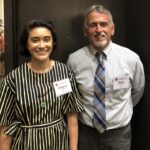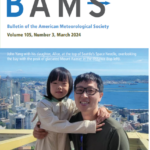A recent drought in southern Africa has led to massive declines in crop production and food availability throughout the region. According to the World Food Program, the United Nations’ food aid division, the shortages are predicted to put millions at risk of starvation in an area already plagued by poverty and malnutrition.
The shortage of rainfall was attributed to the 2015-16 El Nino Southern Oscillation (ENSO), which led to unusually high temperatures and a 50% crop reduction in Malawi, Madagascar and Zimbabwe. In countries across the region, food prices have risen sharply, with many fearing that the lack of income from a poor harvest will put rural populations at an even greater risk of hunger.
While the consequences of the recent El Nino have been devastating, they did not necessarily come as a surprise. Climate scientists have known that ENSO usually results in a lack of rainfall in certain areas of southern Africa. Amy McNally, a University of Maryland (UMD) Earth System Sciences Interdisciplinary Center (ESSIC) research associate working at NASA’s Hydrological Sciences Laboratory, has helped monitor the drought under the Famine Early Warning System Network’s Land Data Assimilation System (FLDAS).
“The impacts for southern Africa and what we saw in East Africa … were anticipated,” McNally says. “It’s kind of a typical pattern when we have a strong El Nino year.”
Unlike in previous years, however, the use of the FLDAS has allowed researchers to delve deeper into the underlying effects of this year’s drought.
“Before they would mostly look at rainfall and satellite vegetation indices,” explains McNally. “What the model helps us do is fill in the missing information [like] soil moisture. That’s actually the water that is available for plants.”
In addition to better understanding surface water availability for plants, the FLDAS provides scientists with estimates of runoff and streamflow, key indices for the water that is available not just for crops, but for people as well.
In a Famine Early Warning System (FEWS) special report released in March, McNally and others were able to better outline the extent and severity of the recent drought. The report notes that throughout many of the major crop zones of southern Africa, rainfall was less than 65% of the 1982-2011 average. In addition, many parts of South Africa, Zimbabwe, Mozambique, and Madagascar experienced their driest rainy seasons in 35 years. In these same regions, surface water availability was reduced to less than 35% of the 1982-2011 average.
With this data, FEWS can provide better information for agencies that handle the distribution of assistance and relief, such as the United States Agency for International Development (USAID).
“This information is ultimately used in the planning phase as decision support for when USAID will actually issue humanitarian aid,” McNally says. “They gather all the evidence for how severe things are and where exactly the needs are and then USAID decides [what] resources they are going to send to a certain place[s].”






